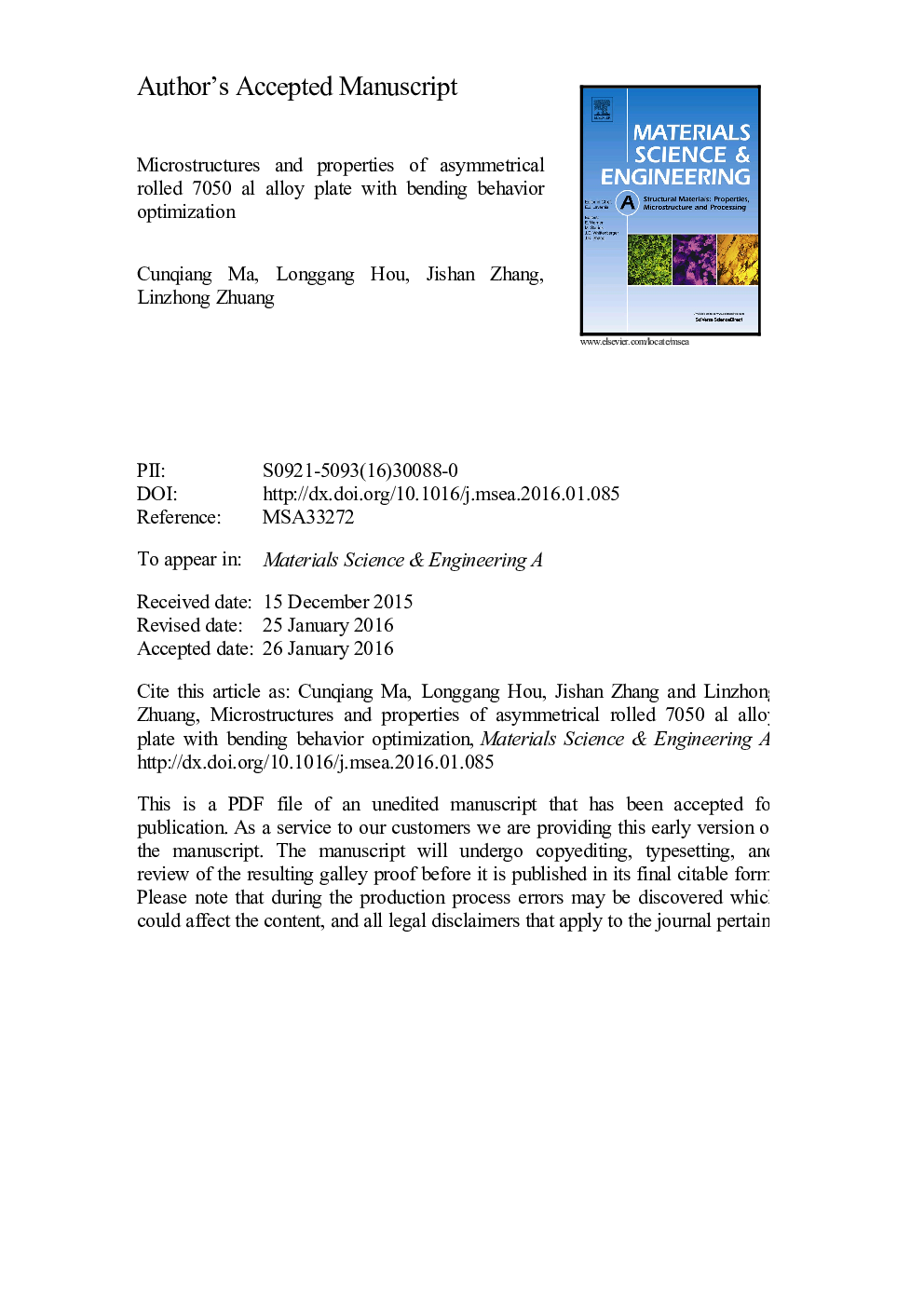| Article ID | Journal | Published Year | Pages | File Type |
|---|---|---|---|---|
| 1573754 | Materials Science and Engineering: A | 2016 | 25 Pages |
Abstract
Bending behaviors during multi-pass asymmetrical rolling (ASR) process were optimized by adjusting the thickness reduction per pass (ε). The bending curvature can be reduced significantly, almost closing to zero at a critical thickness reduction per pass (εc), by which the continuous multi-pass ASR process can be guaranteed. εcs were obtained by Finite element (FE) simulation firstly, then applied them to the multi-pass ASR-processing. The results show that the predicted εcs are consist well with the experimental values, which can make the ASR-processed plate exit without bending during multi-pass ASR processing. Microstructural evolution, mechanical properties and fracture toughness of symmetrical rolled (SR) and ASR-processed plates with bending behavior optimization were contrastively studied and it shows that the ASR processing can impose more severe deformation to the coarse constituent particles and matrix due to the introduction of additional shear strain, resulting in the improvement of microstructural homogeneity throughout the plate thickness. And mechanical properties and the fracture toughness of the ASR-processed flat plate are improved significantly due to less coarse constituent particles after annealing. In addition, effect of the recrystallization microstructure on the fracture toughness of T6-treated SR- and ASR-processed plates is also discussed in this study.
Related Topics
Physical Sciences and Engineering
Materials Science
Materials Science (General)
Authors
Cunqiang Ma, Longgang Hou, Jishan Zhang, Linzhong Zhuang,
